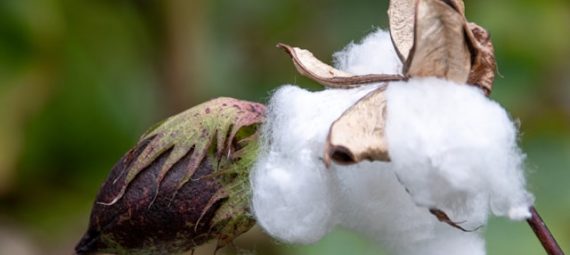Climate and sustainability goals have lost significant public support. The Supply Chain Act is being watered down considerably in Germany and at EU level, as are the sustainability reporting obligations.
The cotton sustainability standards BCI, CmiA, Fairtrade and GOTS are also feeling this “backslash”.1 Sales figures for sustainable cotton have been stagnating for 2-3 years for all 4 standards and, as a result, license income and income from the volume-based fee (VBF) for BCI VBF. The whole thing comes up against a struggling traditional textile retail sector.
Is there a way out of stagnation?
Sustainably labeled textiles will only become more interesting again for retailers compared to the competition from Temu, Shine and others if they can make it much clearer and more credible than before that buying these textiles actually makes a significant difference for small farmers in Africa and Asia.
To achieve this, the standards must become much more transparent and ambitious. What does that mean in concrete terms? 2
Transparency
The annual reports must show complete financial figures, i.e. a profit and loss account and a balance sheet. This is not the case with the Aid by Trade Foundation, the owner of CmiA. The public therefore does not know how much reserves and capital AbTF has. At BCI, we would like to see a detailed breakdown of income and expenditure in the income statement. It should also be reported not only how much certified cotton is produced, but also how much of it is purchased by retailers. At BCI it is just under 50 %. AbtF does not provide any information on this. However, the percentage is probably not much higher.
Both AbtF and BCI should clearly disclose what percentage of their income from license fees at CmiA or the volume-based fee (VBF) at BCI is spent on costs to ensure the respective requirements of the standard (assurance) and what percentage is spent on supporting smallholder cotton farmers. This can be partially reconstructed for BCI, but not for AbtF.
Fairtrade Germany’s annual report does not make it clear whether Fairtrade pays cotton farmers a price that is higher than the world market price. Until recently, this was not the case. In this respect, Faritrade does not pay farmers better prices for cotton than BCI or CmiA.
Sustainability standards should have a complaint, safeguarding and whistleblowing mechanism and report on complaints. So far, this is only the case for BCI, but not for CmiA, Fairtrade and GOTS as far as can be seen.
Investments in improving the productivity and living conditions of cotton farmers
All the BCI, CMIA, Fairtrade and GOTS labels mentioned advertise that they improve the living conditions of the farmers who have certified them. With this claim and, so to speak, on behalf of the cotton farmers, they generate licensing income (volume-based fees) from the textile retailers who sell the labeled products.
How much of this income reaches small farmers in Asia and Latin America?
BCI maintains a Growth and Innovation Fund (GIF) that invests in improving the productivity and living conditions of smallholder cotton farmers. This fund is fed by parts of the volume-based fee (VBF) and grants from donors. In 2024/25, the GIF realized income of EUR 30 million, of which EUR 17.5 million came from BCI’s VBF. Of this income, EUR 11.5 million could not be spent in the reporting period.
In 2024, the AbTF (CmiA) spent 528,000 euros on social projects in the cotton growing regions: Construction of schools, wells, promotion of women’s cooperatives, etc. The percentage of AbTF’s program implementation costs spent on promoting the productivity of smallholder farmers is not clear from the report (see above). In 2024, AbTF generated a profit of EUR 3.2 million, which, like the profit of EUR 2.4 million in the previous year, was allocated to the capital reserves.
Fairtrade paid out 840,000 premiums for projects with cotton farmers’ cooperatives in 2024. As far as we know, GOTS and other organic standards do not invest any money in improving the living conditions and productivity of small farmers. The organic farmers who grow cotton are paid a price that is higher than the world market price. Whether this price more than compensates for the generally lower productivity of organic farmers and whether they achieve a higher net income than conventional cotton farmers has not yet been researched to any great extent. And GOTS, for example, is not making any efforts to research this.
The question now arises: why do BCI and ABTF not distribute a large part of their “profits” to the smallholders they certify? In the case of BCI, this may be because the GIF is still under construction. In the case of AbTF, this is completely incomprehensible, as the foundation has enough project proposals from its partners in Africa to support small farmers who are urgently waiting for grants. After all, AbTF has now set up a fund of 500,000 euros to promote biodiversity in the cotton growing regions. However, this is still very modest in view of the profits mentioned.
Living Income for smallholders
A representative study recently carried out in Cameroon shows that all CmiA-certified cotton farmers there earn on average only 50% of what they should earn to lead a decent life. A comparable study conducted by BCI in the Indian states of Maharashtra and Tengalana with smallholder cotton farmers came to similar conclusions.
Now, one might expect sustainable cotton standards that promise consumers that they will help improve the living conditions of small farmers to develop a strategy for gradually improving the “living income gap” – i.e. the difference between real and “decent” income. BCI at least addresses the problem and promises to work towards achieving a livigin income, but without specifying concrete steps and targets. AbtF (CmiA), Fairtrade and GOTS do not address the problem of the “living income gap” at all.
The standards would gain considerably in credibility and therefore also in marketing opportunities if they at least formulated concrete, measurable sub-steps and targets on how they want to get closer to a living income. If they were then to report transparently on the implementation of these goals on an annual basis, a great deal of trust could be built up among consumers and textile retailers. In an increasingly difficult environment for the sustainability debate, it is simply no longer enough to implement a few social and soil quality projects in the cotton growing regions and otherwise refer to the training induced by the standards.
Reducing the use of synthetic pesticides in cotton cultivation
At the UN Biodiversity Conference in Montreal in 2022, it was decided to reduce the use of synthetic pesticides by 50% by 2030. In cotton cultivation, on the other hand, Highly Hazardous Pesticides according to the classification of the Pesticide Action Network are still used, even under the certified standards BCI, CmiA and Fairtrade (only approx. 40% of Fairtrade is certified organic). These insecticides are harmful to human health and to fauna and flora.
In its mission statement, BCI is now committed to reducing the use of synthetic pesticides by 50 % by 2030 and reducing the use of highly hazardous pesticides to 0. According to the latest BCI annual report, use has already been reduced by 81%.
In the annual reports of AbtF and Fairtrade (which, however, only briefly address cotton), there are no targets for reducing the use of pesticides. It should be noted that around 40% of Fairtrade cotton is also certified organic cotton.
The use of biological pest control methods in conventional cotton farming receives little or no attention in the annual reports of BCI, AbtF and Fairtrade. This is all the more incomprehensible as both BCI and CmiA partners in Africa and Asia are testing the use of biological pest control methods on a large scale, including the use of biopesticides. These are based on indigenous weeds, are biodegradable and are generally not harmful to human health. The test results to date are consistently promising. It would therefore be desirable for BCI, CmiA and Fairtrade to invest heavily in researching and applying methods of biological pest control. Everyone involved knows that the classic IPM strategy of reducing the use of synthetic pesticides by spraying on the basis of pest thresholds, among other things, does not solve the problem of synthetic pesticide use. Ultimately, the problem must be tackled at the root, i.e. synthetic pesticides must be replaced by biopesticides and other accompanying measures.
Conclusion:
Over the last 20 years, BCI and CmiA have managed to massively develop the market for sustainable cotton. 20% of the cotton traded worldwide is BCI certified. 40% of the cotton grown in Africa is CmiA certified. Both standards have built up a global network of partner companies, with which it is also becoming increasingly possible to create extensive transparency and traceability in the supply chains. And they have established a structure that enables them to work with their partners in Asia and Africa to implement projects to improve productivity and living conditions for smallholder farmers much more accurately and cost-effectively (significantly lower transaction costs) than traditional development cooperation.
It is time for BCI, CmiA, but also Fairtrade and GOTS to use these instruments much more courageously. This is the only way they can convince their retail partners and customers that cotton products with these seals really do make a difference for small farmers.
Footnotes:
- GOTS is the most widely established standard for organic cotton. ↩︎
- The following information is based on the evaluation of the annual reports 24/25 of the Better Cotton Initiative (BCI), the annual report 24/24 of the Growth and Innovation Fund (GIF) of BCI, the annual report 24 of the Aid by Trade Foundation (AbtF), which owns the Cotton made in Africa (CmiA) brand, and the annual report 24 of Fairtrade Germany. ↩︎
Cover picture: Photo by Alfred Leung on Unsplash


